#as the basis for their argument because it's not representative and often an example of the most vocal not being the most reflective
Explore tagged Tumblr posts
Text





#also at this point I'm skeptical of journalists talking about employment challenges and using media and journalism employment#as the basis for their argument because it's not representative and often an example of the most vocal not being the most reflective#are there issues with employment and people getting jobs and retaining jobs? of course - that's not been eliminated#but we are in historically and incredibly positive employment conditions
134 notes
·
View notes
Text
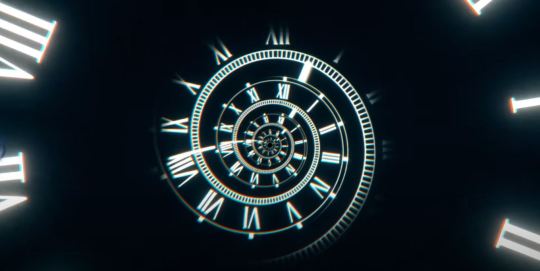
Down into the VORTEX: the Curve Theory
I mentioned the Curve theory in a meta before but I wanted to dive even deeper into the fuckery of it.
I'll remind you what I call a Curve so you're all up to speed (cf: Rick and Morty):
The curve basically walls off the infinite number of universes, in which INSERT CANONICAL NODE happens, from the rest of the infinite multiverse. A model often used to explain is that the definition of a Finite Curve has no set parameters; it's just wholly random and infinite therefore can be represented as a repeating, immeasurable shape modeled with a circle. A Finite Curve would then present a finite collection of dimensions.
How is it relevant to Link Click? Well, I'm glad you asked.
I argued in the past that cakes on promotional artworks could represent curves and each curve would have hypothetically 12 repeats to offer. This is a conclusion I came to after my treasure hunt for the 5th timeline (for which I keep finding daily proofs of, by the way).
For the sake of understanding exactly how it can apply to Link Click lore, let me walk you through the basis.

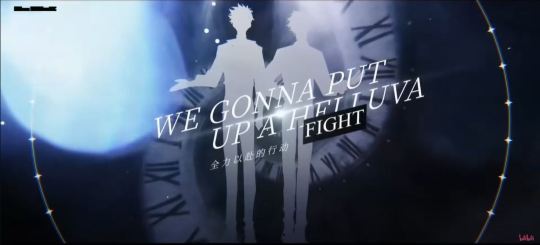
Rick&Morty season 6 // Link Click BREAK! PV Note: I'm using this analogy because it is the most accurate way to bring you where I want.
By the way, we kinda already saw what resembles a curve according to the LCverse
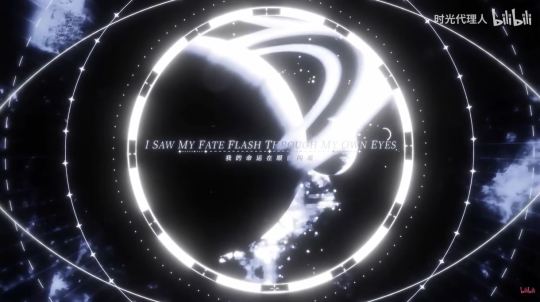
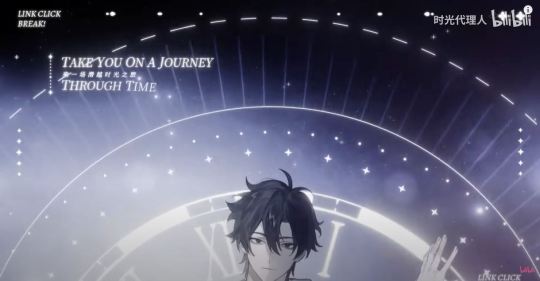
BREAK!
If you count the circles, you'll find that five different rings turn around Saturn in BREAK! PV.
This being established, since the purpose of a Curve is to put a set of timelines sharing the same parameters together, I will argue the LINK here is a canonical unchangeable node. You guessed it:
Cheng Xiaoshi's death.
But honeslty, I don't believe that CXS is supposed to die in every possible universe - and for the sake of the argument, let's assume he isn't.
Actually, when we see flashes of him dying in LG's arms, my first thought was the first one to change the timeline and die doing it was probably CXS; that's why LG freaked out when his friend took a shot for Qiao Ling.
But let's review LG's side of everything first, shall we?
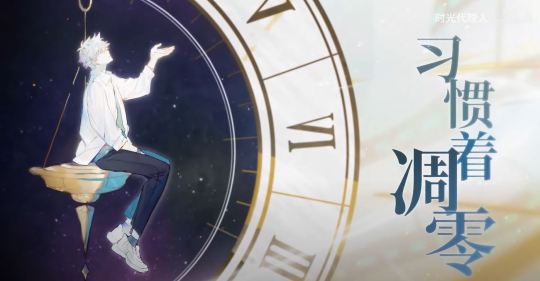

LG used up 4 pictures to save his friend
LG's ultimate goal is to save Cheng Xiaoshi's life and he failed four times. Death is supposed to be an unchangeable node and LG knows that by trying to keep it from happening, he will destroy time itself. Does he care? (/rethorical)
We know little about his previous dives, except that either he never made it this far or Li Tianchen and Li Tianxi weren't part of the timelines he knew. And, CXS died in his arms at some point, giving him access to his Back In Time power, alike what happened between Li Tianxi and Qiao Ling.
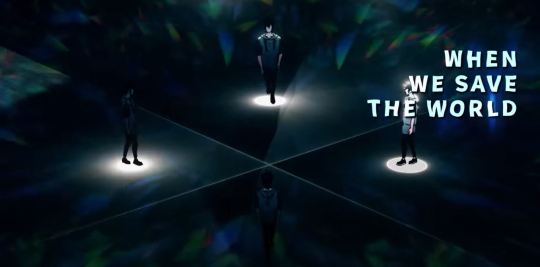
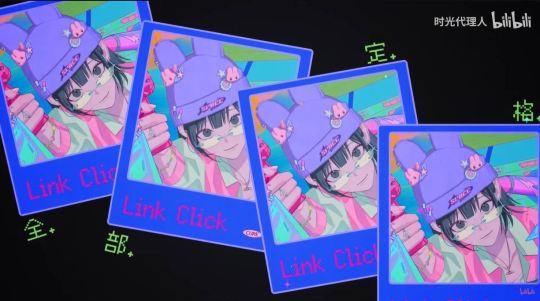
Here are some theories about them though:
If the Live Action reveals itself to be canon, it could be the Prime Timeline for Lu Guang. (We'll know for sure by the end of the month, I guess.)
In the Manhua, LG is protective and affectionate around CXS, in a very melancolic way. I'm not kidding, he's so soft it hurts.
The Daily Life in Lightime happens in another timeline and we can actually point out the moment Lu Guang dives in.
This time around, LG went and met CXS earlier than in the original timeline. (//Live Action)
It could be a coincidence that Lu Guang's character is more and more bored as we go through these examples. Keep an open mind here.
Lu Guang from the LCLA has dark hair but the promotional poster show one photograph of him with white hair. Why? There are so many jokes on LG's age in the donghua but mostly: he is so frail and remains in a sitting position if he can help it. Just like in Dive Back In Time, where he's the only one not standing. The man is exhausted. I'm just saying, perhaps his white hair isn't supposed to be white and the fact we see him with dark hair only in LCLA, played by a man of flesh, could be THE clue hidden in plain sight that this version is the original.
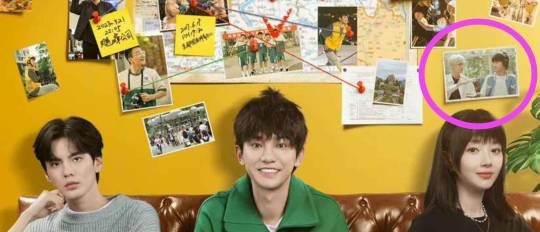
Note: I purposefully didn't include the musical here. The repetition of the media itself is quite interesting. Every performance is unique but the script itself is the same. It could very well be a curve on its own. Just a idea, nothing consistent.
What tells us LG isn't at his first dive is the music! Now, I won't go too deep into it because I really want to craft ONE post about this particular topic. Dive Back in Time and VORTEX are the most obvious because most of us probably never skip the intro, aaaand we get it: they are doomed by the narrative.
So yeah, this is basically why I call those "chances":

Overthink
3 more to go
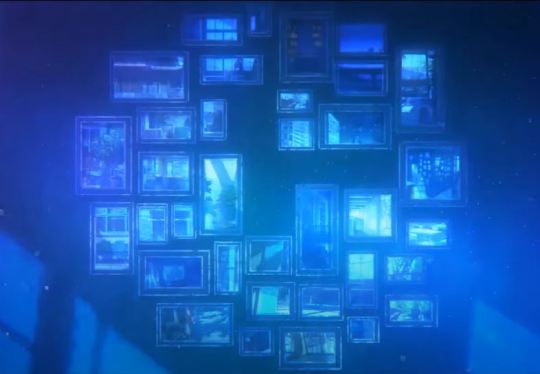
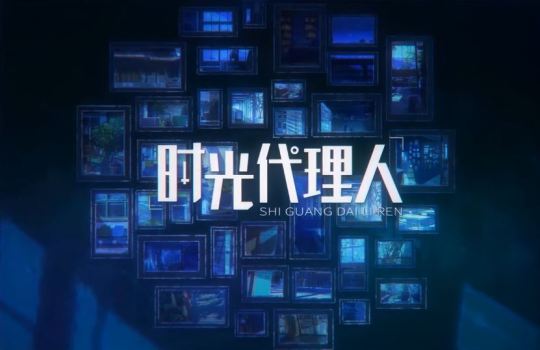
Qiao Ling's birthday // Dive Back In Time
If you pay attention to the titlescreen, you'll notice free spaces in the center of the circle. By the end of the opening, one is filled, hinting that this picture has been used.
There are other winks on the number 3:


Cause I'm about to lose my- Cause I'm about to lose my- Cause I'm about to lose my mind >> Dive Back in Time When my friend are holding hands, heading into abyss I ran my lungs out so I wouldn't have missed But I missed, I missed, I missed >> Keep in Mind So what's that sound sound sound Spinning all night long long long Temperature goes down down down Got my mind feelin' drown drown drown >> The Tides
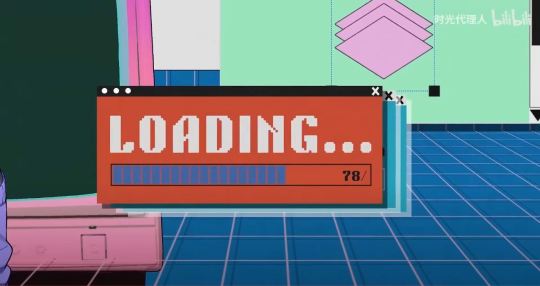
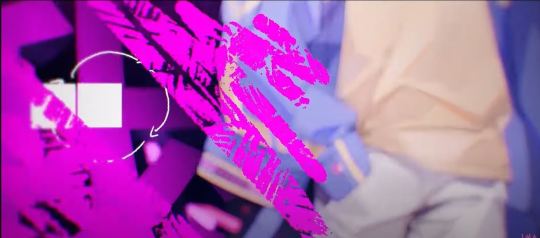
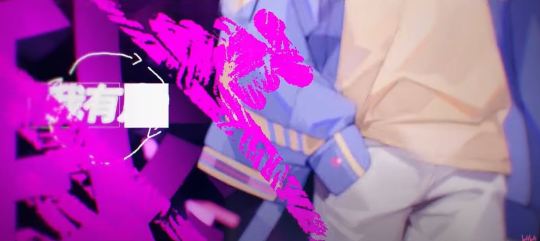
Let's assume that there are three chances left at the begining of the show. We still don't know when the inner monologue at the end of season 2 happens on the timeline, but LG mentioned his "last chance" to save CXS. The synopsis for Yingdu Chapter announced CXS died, as if it was common knowlegde (I love them for their audacity).
Are those the three last chances? To be continued.
The One True Curve
All these timelines happened inside the same Curve. Now, why do I think there ARE other curves to begin with when we already had to work so hard to get this far?
The camera isn't the same depending on who, Lu Guang or Cheng Xiaoshi, is taking the picture. The reflection changing is a way to show alternative timelines, which is different from repeats. It is a common visual clue, FOX used this technique to promote their show FRINGE for example (2 different universes crashing into each other).
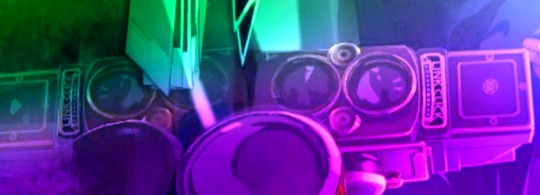
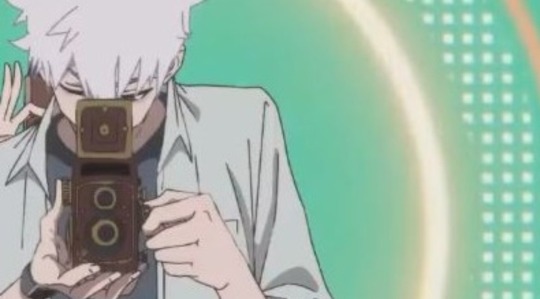
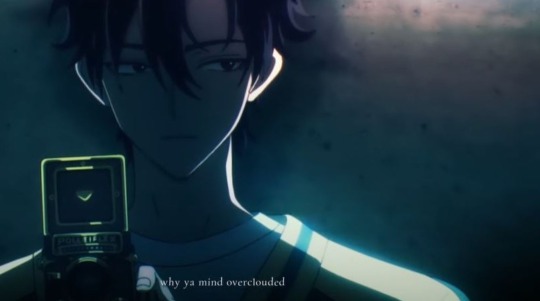
There are some visuals with several clocks (I'll make a post per PV one day eventually). The first one shows a lot of different broken clocks and two merged ones as the biggest, central. This is our current curve. Our three protagonists and the antagonists are fighting over it; Light against the Shadows, as bilibili's accounts often dub the artworks. This could be our time paradox. On the second screenshot, the word LEAVE is over distorded clocks, fracturing space. Also a hint on several other realities, which have probably been left behind.
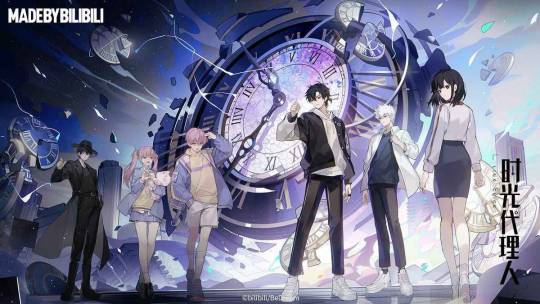
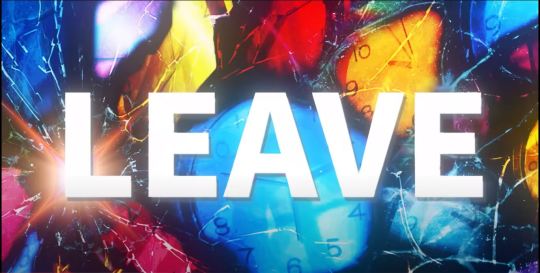
Train Trail // XETROVerthink
About that, the Vortex concept can be associated with a way to travel from one curve to another. Lots of science-fiction tvshows use this tool (Star Gate or SLIDERS).
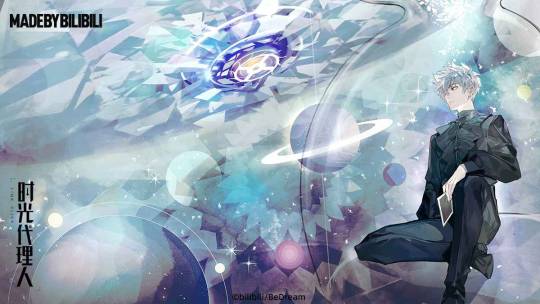
The general idea is that, in the center of another curve the unchangeable node is different: Cheng Xiaoshi is the one trying to save Lu Guang's life.
There is of course, another explanation, just as valid as the Curve Theory: they are repeating this cycle of saving their friend over and over again. Once they run out of repeats, they die and the other go back in time to save them, completely unaware of the repeats; turning the hourglass over once again. The biggest clue for this one is... Well, the hourglass, for obvious reasons.
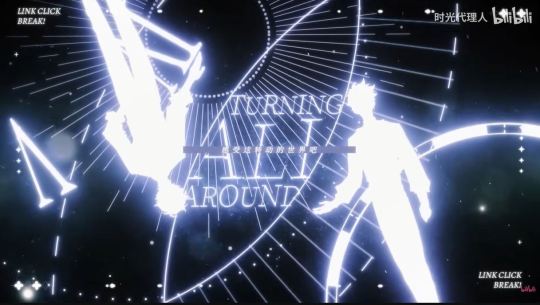
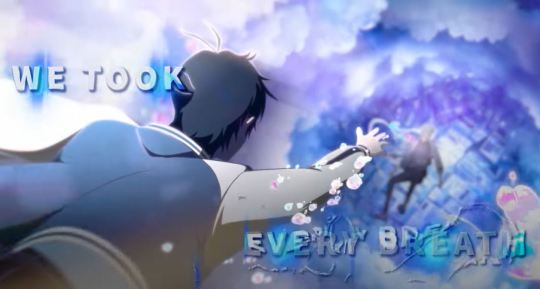
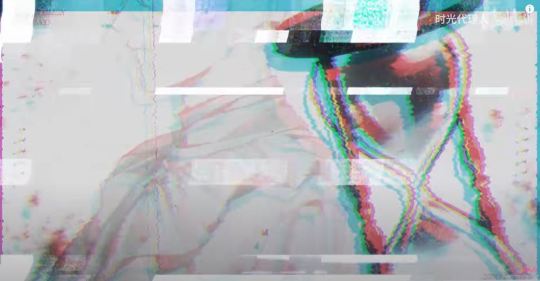
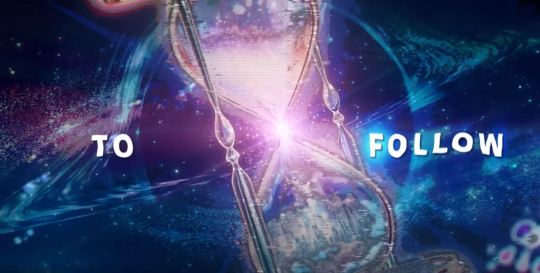
Link Click BREAK! PV // XETROVerthink
In XETROVerthink, we have LG appearing in the hourglass, probably in a bad shape, drowning perhaps, and CXS is swimming to him to save him; it's his turn. They are both unaware of their predicament.
By the end of BREAK! CXS's hair also turns white. It implies that he, too, went through many repeats to change their fate.
~
That's all folks! Of course I'm not close to other theories. I find the Curve Theory pretty cool. I would like to see them fight to actually get out of this canonical node, and find a place for themselves when they live their best idiots life.
I also have many additional thoughts about all of it: (Edit: you can find the meta here)
Some character presentations also hint at more than five repeats. Five repeats would be the current score for Lu Guang but Cheng Xiaoshi would have a higher number.
Some PVs enlight V for Lu Guang but X for Cheng Xiaoshi.
Some promotional posters or even VORTEX show LG and CXS as each other's reflection, as if separated by glass or water.
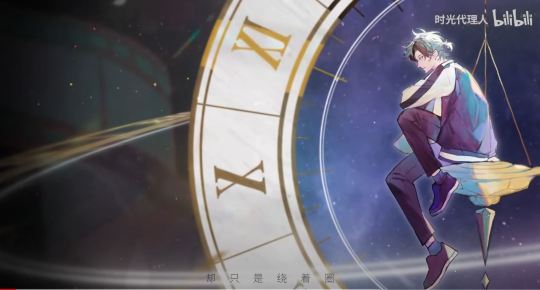
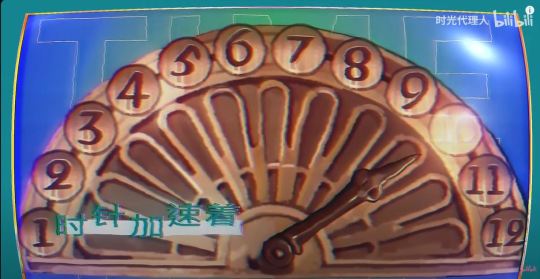
I'll will post more about it but 'nough said for now haha
56 notes
·
View notes
Text
having meditated on it, the issue with the lords of fortune isn't that they're doing repatriation now, it's how it's being handled as a piece of storytelling. and the way it's being handled is fucking BORING.
the thing about returning looted artifacts to their cultures of origin is that, in real life, it's an extremely dicey issue. and when i say that, i'm not saying "and that's why we should not do it in real life nor depict it in fiction", because obviously we should do both of those to the best of our ability. but it isn't straightforward.
in real life, arguments made by museums in looter countries against repatriation often bring up how there isn't always a solid record of which pieces of art and culture were stolen or parted with via coercion, and which were traded for willingly; or refuse to recognize the sovereignty of a nation of people who claim ownership of an item and prefer to return it to a modern-day government that does not represent them; or, alternatively, bring up the fact that the modern-day country requesting the artifact "back" was not the same country that created it, and use that as evidence that they don't have any claim to it at all. there are political considerations, there are diplomatic considerations, there are military considerations. it's a whole thing.
in the setting of dragon age, you don't have all of these exact problems. but in a scenario where we're to understand that this semi-decentralized guild of treasure hunters has recently shifted gears toward repatriation, we don't have zero problems. the principle one is that thedas as a continent and the states within it don't actually function the same way our world does, meaning "repatriation" might not even be a consideration for anyone who isn't an elf, but i don't wanna get into that. there are far more granular issues instead.
for example, one story in tevinter nights follows a band of lords pulling off a heist. does this mean stealing from the living is above board, but robbing the dead is frowned upon unless you give some of it back to the descendants? how old does an artifact have to be before it stops being fair game? how culturally significant does it have to be, and how do you even measure that?
what if you're a long-time member just in this for the plunder, and now that your guildmates are advocating all this scholarly and/or culturally respectful stuff, you're just pretending to go along with it and palming smaller relics for resale? what responsibility does the lords of fortune as a guild have to penalize you? what ability?
what if you proudly present a dalish clan with a burial urn you found outside of its context, and then their keeper gets fucking pissed at you because that was supposed to stay in the ground, you idiot, and now you and your guildmates are suspected of defiling a grave? on the flip side, what if you DO defile that grave, and return the relics inside for a finder's fee alongside the lie that you got it from the real graverobber, because offering a bounty for returned cultural artifacts creates a demand for them?
what if your opinion of what counts as "sacred" is different from someone else's, on a cultural in addition to an individual basis?
what if two dalish clans who hate each other place a claim on the same relic?
what if, perhaps, you have a kossith contact in your guild, living the qun outside of a qunari community. and you've been giving her all of your qunari artifacts to study, in the spirit of goodwill and cultural exchange. and then one day on your way to her house a ben-hassrath steps out of the shadows and politely requests the tablet you're holding, and also directions to your contact's residence, because as far as the ariqun is concerned, you've been giving vital pieces of qunari culture and history to someone who isn't a qunari?
what interesting scenarios! what rich stories we could get out of them! even the barest reference to some of these issues would suggest a more multifaceted view of a faction, and entice players into selecting it for their character.
and at time of writing, i'm still waiting to see anything like them in the game.
#this is a heavy topic even in fiction and i really hope i phrased this respectfully. i wrote this post basically off the dome at work#so it isn't the most well-thought criticism#but i have been thinking about this a lot#dragon age#datv spoilers#lords of fortune#dragon age the veilguard#just squirrelly things#lof rants#<- new tag abt this#i refuse to call it ''wank'' that word is stupid
31 notes
·
View notes
Text
Are Logan & Janus Two Sides of the Same Coin?
In "Dealing With Intrusive Thoughts," it is revealed that Remus is Roman's "dark" counterpart. But who is Janus' "light" counterpart? It is certainly possible that he doesn't have one. But given how much emphasis is put into the symmetry between the "dark" & "light" sides (same number in each, black vs white clothing, etc), as well as the similarities within these groups (the naming conventions, for instance), it seems likely that Janus is somehow connected to one of the others. Following the example of Roman and Remus, both brothers are responsible for creativity, but Roman's creativity is deemed to be good and pure, whereas Remus' creativity is deemed dark and disturbing. Therefore, Janus and his counterpart would likely share the same fundamental trait as well, though their manifestations of it would be different. On this basis, I will argue that Logan and Janus are connected by the trait of reason, and that Janus is a "dark side" because he uses reason in a way that is cynical and self-interested.
First, let us compare Logan and Janus' style of argumentation. Logan typically references scientific studies and concepts, such as the Yerkes-Dodson Curve and the statistic about Christmas decorations that appears in "Putting Others First" to name only a few. This demonstrates his highly empirical world view, and from these empirical observations he draws normative conclusions about what Thomas ought to do. One of Logan's biggest emphases is on Thomas's health, as demonstrated in "Why Do We Get Out Of Bed In The Morning?"
On the other hand, Janus focuses on philosophical arguments, referencing Kant, Stirner, and Nietzsche to make his points. Though Janus is less interested in scientific facts, he still demonstrates logic in his own way, as these philosophers all used rational arguments to support their conclusions (note: whether or not you agree with them, what I mean by "rational" is that they applied the rules of logic to their premises to construct their philosophies). Janus has also been described as representing self-preservation, an aim not too dissimilar to Logan's goal of promoting Thomas' health. After all, Janus explicitly argued in favor of Thomas's mental health in "Putting Others First."
With all of this being said, it is worth noting that the flexibility and ambiguity of philosophy allows Janus to use logic as a tool to suit his needs in the moment. To put it in the words of Renee Descartes, "there is nothing so strange and little believable that it has not been said by one of the philosophers." Furthermore, "Selfishness vs Selflessness" draws attention to the contradictions between Stirner's belief in equality and his racism, suggesting that philosophers are often hypocritical and cannot necessarily be trusted. This is what makes Janus a "dark" side - he too has the capability to reason, but rather than pursuing the noble goal of truth, he uses his powers to manipulate others and further his own ends.
Given this reading, it is significant that in "Selfishness vs Selflessness," Logan is the one to mention Peter Singer, a contemporary philosopher. This further reinforces the hidden similarities between the two. Throughout the entire series, the only other side to use philosophical arguments is Janus, so for Logan to reference a philosopher in support of one of his own arguments suggests that he recognizes a certain logic to them as well (even if it is not his default method of logic). Moreover, Janus' adoption of the more science-based mental health rhetoric in the same episode shows that this parallel goes both ways.
This opens up a new avenue for speculation: who is Patton's "dark" counterpart? There are two possibilities: Virgil and the yet-to-be-revealed Orange Side. I will now discuss the evidence and implications of both:
Virgil: It is undeniable that Virgil and Patton share a unique bond. This can be seen throughout the episodes, and it would feed into the idea that Virgil is Patton's (formerly) "dark" counterpart. The trait that both share in common is feelings - while Patton's feelings are generally quite positive with some negative ones slipping through (see Moving on), Virgil is largely negative with a few positive emotions occasionally showing. However, if Virgil is the "dark" side of Patton, it is not clear what it means for him to have joined the "light" sides or what makes him special in that regard. Perhaps it can be explained as a result of Patton's morality -- he is ultimately who dictates which sides are good or bad, so if he took a personal liking to Virgil, he would see Virgil as good and thus Virgil would "become light."
Orange: Fans have speculated rather plausibly that the orange side will represent rage/anger, which would work well with this theory. This would be another instance of emotions "gone wrong" so to speak, as one emotion that Patton (and by extension Thomas) never seems to show is anger. Anger has a certain capacity for destructiveness, so this could be why the orange side is considered "dark." If orange was Patton's counterpart, this would leave Virgil without any counterpart, suggesting that he occupies an unusual role within Thomas' psyche and is perhaps the sole "neutral" side.
There is, of course, a third possibility: that orange & Virgil are counterparts, and that Patton is the one who is exceptional. Maybe Patton's role as the arbiter of morality means that he occupies a privileged position in Thomas's psyche which cannot easily be inverted (after all, what would be the purpose in a side that makes Thomas evil for no reason?)
Anyway, what do you guys think?
#sanders sides#sanders sides analysis#sanders sides theory#Sanders sides#logan sanders#janus sanders#ts sides#tss
20 notes
·
View notes
Note
Calling Hogwarts houses one-dimentional is simply incorrect. The four houses represent the strongest trait of each individual, not that they only have one personality.
Harry is brave but also cunning & resourceful.
Hermione is known as both smart and brave.
Ron always looks out for his friends on top of being brave.
Neville, most notable example, is widely believed that he suits Hufflepuff more but that's not true, because he's brave first and foremost.
You might have beef with JK (I do too, same as many HP fans) but you're just wrong about the one dimension thingy. That ask wants to know ROs' strongest trait but you combine the houses so it's two traits instead of one.
NOTE: I absolutely do not condone Rowling as a person/author/her transphobic stance and the antisemitic caricatures rampant in her works. As for continuing to engage and, in fact, critique the work / the world she has created, while also prefacing deep disagreement and disappointment on her personal views, I feel there is space for this as explanation of why we disagree with a person is always more useful and constructive than simple erasure. See more on this here.
Heya! I totally agree and can get behind the idea that the houses take the strongest trait of an individual.
My main beef(s):
The Hogwarts houses would be much better representations of character if they represented the "why" (WHY is someone brave, why is someone ambitious) instead of the "what"
Another thing—if I were to choose, I'd choose 4 traits that are: (a) as distinguishable from each other as possible, and also (b) when combined, cover most of the major ways of viewing and interacting with the world. I don't think Hogwarts houses adequately meet either of those criteria. For me, the Hogwarts house traits picked are kind of... boring. They do not satisfyingly explain / do justice to the characters. I'd pick other traits. I've tried to explain this under the cut a bit more.
Btw, it's been a while since I've read the books and I was a kid then, so i could be WILDLY wrong and would welcome a discussion about this, I'm a huge personality nerd and I love character analyses, so pleease take this as friendly happy discussion (I'm a G in this sense) rather than an argument :)
Argument 1: Traits picked are iffy and weird
What is Ravenclaw's main defining characteristic, exactly? 😂 Like, alright, the rest I get. But I think the main issue with ALL of Rowling's Ravenclaws feeling like "oh smart nerdy" is because the house itself and how it's defined / the trait that is 'headlining' the house is pretty weak in the first place.
Argument 2: Traits picked get at the "what" but not the "why" and hence are less interesting to me on a character-defining/representation basis
Bravery is often inflected with so many other impulses—are you being brave because you care about your tribe/your loved ones more than your own life? Or are you brave because of your ideals, because forging a 'better world' or the 'greater good' (however you define this) matters more to you than individual lives? The former is very close to the 'sense of loyalty' that so defines Hufflepuff. The latter is very close to the ambition that defines Slytherin.
More on ambition:
Before we start, ambition, or Slytherin's main trait, is defined in my brain as: willingness to sacrifice people/things for what they see to be the 'overarching thing'. Whether we think of the particular person as redeemable or evil is dependent on what the 'overarching thing' is:
Themselves / their own wellbeing = evil
Their loved ones (e.g. like Malfoy) = redeemable, rather gryffindor-ian in nature
An even a bigger dream ('the greater good') = redeemable
Herein lies my beef: the reason behind someone's willingness to sacrifice the 'small' thing for the overarching thing (see above) is more interesting and telling of a person's character to me than the choice to sacrifice the small thing or be ambitious or whatever. Hence, I'd do the sorting by the "why" rather than the resulting action "what/how", if that makes sense. That would better capture some of the nuances that you mentioned in your post re: Harry, Hermione, Ron, and also the Hufflepuffs and Slytherins.
Example using the CT:OS character houses I picked
Rayyan's "Gryfferin"-ness is rooted in a willingness to ruthlessly but also bravely, unflinchingly, sacrifice other things for the things they think matter (e.g. people they love, their dreams etc.) which differs from Tobin's "Gryffinpuff"-ness, where their bravery and loyalty is more outward-facing and expansive.
Rayyan seeks to protect their own, while Tobin seeks to make the entire space / world around them better through their actions).
Contrast this to G's ambition and willingness to sacrifice the 'small detail' for the 'overall/big picture'—G's impulse is more objective, impersonal, abstract (it's based on utilitarian principle) and the desire to seek the best outcome in a very... logical way (hence the inflection of the Ravenclaw), rather than the fiery emotion/subjectivity/loyalty-based nature of Rayyan's willingness to sacrifice 'other things' for what they know to be right/true/important to them.
Hope that provides some elaboration on why I griped about Rowling's houses in my previous post haha, and thanks for the message. The length and detail clearly got out of hand HAHA but more because I'm interested in the question and less because I think you're wrong! :)
48 notes
·
View notes
Text
FIRST ON FOX: A report from the Heritage Foundation shows that homicide rates have been higher in Democrat-run "blue counties" than they have been in "red counties" since 2002 – contradicting a popular talking point recited by prominent liberals like California Gov. Gavin Newsom and billionaire George Soros.
Newsom has publicly stated that "8 of the top 10 murder states are red" while liberal mega-donor Soros wrote in the Wall Street Journal last year that "violent crime in recent years has generally been increasing more quickly in jurisdictions without reform-minded prosecutors" and "murder rates have been rising fastest in some Republican states led by tough-on-crime politicians."
The problem, according to Heritage Foundation’s Kevin Dayaratna, who authored the report along with former research assistant Alexander Gage, is that studies cited by Democrats to make that argument – including a recent study from Third Way titled "The Two-Decade Red State Murder Problem" – use a "flawed" methodology because crime is a local issue and, therefore, crime analysis must be undertaken at the local level.
"It is true that red states have higher homicide rates than blue states, but the problem with this is that crime is a hyper-localized phenomenon," Dayaratna told Fox News Digital. "It doesn't make sense to talk about at the state level. It makes sense to talk about at the local level because that's where the prosecutions occur. The local level crime is handled at the local level by local police, so when you look at this question on a local basis, namely the county level, you'll see that the trend is reversed."
"If you look at the analysis on a state-by-state level, it's 34% higher in red states and blue states, according to the most recent data we analyzed, but then when you look at it as a county-by-county level, it is 60% higher in blue counties than red counties."
The study says that "drawing conclusions from state-level homicide data in such a manner is flawed, as each state consists of a combination of federal, state, county, and local law enforcement agencies, as well as prosecutors with different approaches to law enforcement often based on highly divergent political beliefs."
"Violations of state law are prosecuted largely at the county or city level and, thus, amalgamating data across such units neglects important variation in these different approaches," the study continues.
"Looking at homicide rates by county, states show skewed distributions with many counties having little or no homicides, and a handful of counties with excessively high homicide rates. Thus, state homicide rates can be heavily influenced by a few counties. When those counties have different politics from the rest of the state, it can flip the conclusion about the association between political identifications and homicides."
Dayaratna also told Fox News Digital that Third Way’s conclusion that homicide rates are higher in red states is flawed because it did not update the changes in red states and blue states, in terms of how they shifted in presidential elections over the past 20 years, when compiling the data.
ANDREW CUOMO BLASTS FAR LEFT DEMS FOR BEING SOFT ON CRIME, HARMING MINORITIES THEY CLAIM TO REPRESENT
"Third Way held ‘red’ states and ‘blue’ states constant in terms of how they voted in the 2020 presidential election. This approach is fundamentally flawed because electoral sentiment changed across the time period used for the study," the report states.
"For example, although President Biden won Arizona in 2020, the previous Democrat who won the state was Bill Clinton in 1996. Similarly, Donald Trump won Florida in both 2016 and 2020, despite the fact that Barack Obama had won the state in 2008 and 2012."
Dayaratna said that between 2002 and 2008, there was an 88% higher rate of homicide in blue counties than red counties and between 2014 and 2022 there was a 62% increase.
"It is undoubtable that this blue county murder problem has been persisting for quite some time," Dayaratna told Fox News Digital. "And it is quite disingenuous for the Third Way to just present the data as they did. We analyze it from a variety of perspectives at the Heritage Foundation. And we wanted to make sure we put out the proper story."
Last year, Dayaratna partnered with fellow Heritage scholars Cully Stimson and Zack Smith and released a study showing that of the 30 American cities with the highest murder rates, 27 have Democratic mayors, and at least 14 Soros-backed prosecutors.
A spokesperson for Third Way told Fox News Digital that "data is missing or suppressed for many suburban and rural counties, making a complete county-level analysis impossible. But to test a prevalent narrative, we removed the county containing the largest city from only the red states and we found that even after removing the murders from the biggest cities in red states, red state murder rates were still significantly higher than in blue states, which were given no similar advantage."
In response to not updating the electoral map, the spokesperson said they "chose an approach that categorized states consistently across all 21 years" and that "including electoral changes would only increase red state murder rates."
A spokesperson for Newsom's office told Fox News Digital that Newsom has cited more localized crime studies in the past and pointed to a specific interview where he did so in September.
10 notes
·
View notes
Text
5 Simple Steps to Do Time Series Analysis in Python for Homework Help
Python is considered to be the most widely-used programming language for data analysis because of its simplicity, versatility, and robust libraries. In the 2023 Stack Overflow Developer Survey, Python has occupied the third place with 43% of developers declaring its regular usage. Python’s popularity is not exclusive to developers only, but also students and academicians who find the language equipped with extensive libraries such as Pandas, NumPy and Matplotlib very useful for tasks such as data manipulation, analysis and visualization. Specifically in statistics, the robust capabilities of Python have revolutionized the way time series data (stock prices, weather trends or the spread of a disease) is analyzed to find startling insights. Time series analysis using python has benefit the students not only in upskilling their profile but also in grabbing lucrative jobs as a data analyst. Modern day data analytics courses have incorporated highly demanded python programming as a part of the curriculum. But it is often challenging for students to master python due to other academic pressures and commitment. This is where Python homework help comes for rescue to extend a helping hand to complete assignments based on time series data.

Step 1: Understanding the Basics of Time Series Data
Before diving into the technical aspects, it’s essential to understand what time series data is and why it’s different from other types of data.
Time series data is data which is collected or recorded at regular intervals of time. Such intervals may be in terms of seconds, minutes, hours, days, months or even years. One of the primary properties of time series data is the order of data points, which tells us how these datapoints are changing over a given period.
To illustrate this, let us take the daily closing prices of a stock as an example. Prices recorded at different instances represent its performance at different time points and studying this sequence is an effective way of identifying hidden performance patterns.
Key Concepts in Time Series Analysis:
● Trend: The long-term movement in the data.
● Seasonality: The repeating short-term cycle in the data.
● Noise: The random variation in the data.
● Stationarity: A time series whose statistical properties do not change over time.
Step 2: Loading and Visualizing Time Series Data
After getting acquainted with the fundamentals, the next logical step is to import your time series data into Python. Pandas’ library is one of the convenient options to load data.
Example:
import pandas as pd
import matplotlib.pyplot as plt
# Load data
data = pd.readcsv('your_time_series_data.csv', index_col='Date', parse_dates=True)
# Visualize the data
plt.figure(figsize=(10, 6))
plt.plot(data)
plt.title('Time Series Data')
plt.xlabel('Date')
plt.ylabel('Values')
plt.show()
In this example, we load the time series data from a CSV file and set the date column as the index. The parse_dates=True argument ensures that the date column is interpreted as a date object. Visualizing the data is the first step to understanding its structure, identifying trends, and spotting any outliers.
Step 3: Preprocessing the Data
Data cleaning and preprocessing is one of the most important steps that must be done before any analysis is done on the data. When working with time series data, it is important to find and handle the cases of missing values, outliers, or irregular time intervals.
Handling Missing Values:
# Fill missing values using forward fill
data_filled = data.fillna(method='ffill')
Resampling the Data:
In some cases, the data may not be in the frequency that is required for the analysis. For instance, you may have daily data but you wish to analyze it on a monthly basis.
# Resample data to monthly frequency
data_monthly = data.resample('M').mean()
Preprocessing is a critical step in ensuring that your analysis is accurate and reliable. Poorly preprocessed data can lead to wrong conclusions and inaccurate results.
Step 4: Decomposing the Time Series
Decomposing a time series involves breaking it down into its fundamental components: trend, seasonality, and residuals (noise). It is useful in understanding the underlying patterns in the data.
from statsmodels.tsa.seasonal import seasonal_decompose
# Decompose the time series
decomposition = seasonaldecompose(data_monthly, model='additive')
decomposition.plot()
plt.show()
The seasonal_decompose function from the statsmodels library helps in visualizing the trend, seasonality, and residuals for a time series dataset. This decomposition can be used for subsequent patterns analysis or for application in different forecasting models.
Step 5: Building a Forecasting Model
The last but the most important operation in time series analysis is the building of a model to forecast future values. Among all the available models the most widely used one for this purpose is the ARIMA (AutoRegressive Integrated Moving Average) model.
Example:
from statsmodels.tsa.arima.model import ARIMA
# Fit an ARIMA model
model = ARIMA(data_monthly, order=(5, 1, 0))
model_fit = model.fit()
# Make a forecast
forecast = model_fit.forecast(steps=10)
print(forecast)
In this example, the ARIMA model is used to forecast the next 10 time periods. The order parameter specifies the lag, difference, and moving average terms for the model. Fine-tuning these parameters can improve the accuracy of your forecasts.
Elevate Your Grades with Our Python Homework Help Services
The Python Homework Help service is precisely tailored to meet your needs and ensure that not only the homework solutions are delivered on time, but also you gain the necessary understanding of the solution through post-delivery doubt clearing sessions. The Python assignment help is not only limited to answering the python problems, but also providing detailed step-by-step self-explanatory solutions, software steps and python codes that enhances your learning experience. Python codes along with comments explain each step of the coding process. Students can follow the software steps and run the python codes on their computer to generate the results.
Comprehensive Support Across Multiple Software Platforms
In addition to Python, our team of experts is proficient in a wide range of statistical and data analysis software, including:
SPSS: Ideal for social sciences and market research.
Excel: Widely used for data manipulation and visualization.
SAS: Powerful for advanced analytics and predictive modeling.
Eviews: Perfect for time series econometrics.
JMP: User-friendly for interactive data analysis.
Stata: Great for statistical data analysis and visualization.
Jamovi: An open-source alternative for easy statistical analysis.
Rstudio: The go-to for statistical computing and graphics.
Minitab: Simplifies quality improvement and statistical analysis.
Why Choose Our Services?
Expert Guidance: All our team members have years of experience in providing students custom assignment help using Python and other statistical software.
Tailored Solutions: Each work is individual, and our solutions are always aimed at addressing each assignment’s requirements.
Learning-Oriented: We go beyond just solving problems by providing explanations that help you understand the "how" and "why" behind each solution.
Timely Delivery: We understand how important deadlines are in the academic curriculum. Our services are fast and ensures that you never miss your deadline.
Affordable Pricing: Our prices are affordable for every student without compromising on quality parameters.
Conclusion: Mastering Python for Data Analysis Learning Python is advantageous for students for analyzing data and using it for data-driven decision-making, especially in time series analysis. However, the pressure to achieve good academic performance often creates an atmosphere of stress and anxiety amongst students. When you engage with our python homework help experts, you do not feel the burden of dealing with challenging python tasks involving advanced concepts and modeling. Besides better grade, you gain practical knowledge that boosts confidence in dealing with similar tasks in the future on your own. If you are having problems with Python or any other software, we stand ready to provide you with all round support. Do not let the academic pressure put you in a state of depression. Grab the benefits out of our services and achieve the best of results!
Resources for Further Learning:
"Python for Data Analysis" by Wes McKinney: This book is a great resource for learning data manipulation with Pandas.
"Time Series Analysis with Python" by Ben Auffarth: A comprehensive guide to mastering time series analysis using Python.
FAQs
Why should I use Python for Time Series Analysis?
Python is more suitable for time series analysis because of Pandas, NumPy, and Matplotlib libraries, which simplify the handling of data and visualization. Moreover, the Python programming language is also popular among the user community due to its flexibility and ability to be used by both novice and expert analysts for statistical computation.
How can your Python Homework Help service assist me with my assignments?
We offer help with your homework in Python, especially in conducting time series analysis through our python homework help service. We don’t just solve your assignments but also provide self-explanatory solutions so that the understanding of the concepts is easy.
What other software support do you offer besides Python?
Apart from Python, we provide support in statistical and data analysis software like SPSS, Excel, SAS, EViews, JMP, Stata, Jamovi, RStudio, and Minitab. Our tutors are well acquainted with these tools and would be pleased to assist you with any type of assignment, data analysis, or interpretations.
How do you ensure the quality and accuracy of the solutions provided?
Our team of experienced professionals pays attention to every detail that goes into developing an assignment to ensure that when completed, it is accurate and relevant. We employ data analysis tools and techniques that aligns with the best practices in the field of data analysis and choose appropriate statistical methods for accurate results.
Can I get help with urgent assignments or last-minute homework?
Yes, we do provide solutions to assignments having tight deadlines. Our team ensures that the solution is prepared as per the instructions and rubric without any quality deficit. Our team is aware of the role of the due dates in academics and we believe in efficient working and timely completion.
How do I get started with your homework help services?
Getting started is easy! All you need to do is submit your assignment details on our website www.statisticshelpdesk.com, and our experts will give an estimate of how much it would cost and how long it would take to complete. Once the price is finalized, we shall proceed to work on your assignment and prepare the solution in the time frame agreed.
Are your services affordable for students?
Absolutely! Students always have a tight budget, and that is why we set reasonable prices for our services while maintaining high quality. We always aim to offer easy to understand solutions and free post delivery support to clarify all the doubts.
0 notes
Text
hi sorry this is my first time doing discourse on this website and it's also super late where I live but I wanted to throw my 2 cents in if that's okay.
I think, while the specifics are off, @alyanas-little-hideout is right in pointing out that tension. i can't speak about other places but in Canada the massively expanding public education of the 30s 40s and 50s, whose structure formed the basis of the haphazard system we have now, was very much designed with the interests of employers (esp industry) in mind. they were given a seat at the table when writing curriculum! the extent varies between provinces ofc but is broadly true. so there's an employer-interest represented in the design of the system, and you'll regularly hear people (students, parents, and others) talk about how schools should be teaching "life skills" (usually they mean how to do your taxes) or skills that help you get a job. so not literature analysis.
on the other hand, we often also talk about school and education being valuable in itself. that has a longer history than school-as-job-training. if you press educators to defend the system, or ask them what the purpose is, they'll often point to this as an example. I don't think the system is very good at this because, in my experience, kids don't really retain much of the content they're taught. to go back to taxes, people often complain kids don't learn how to do them in school—they do! it's part of the curriculum here! I have gotten into arguments with old high school classmates who insisted we were never taught what compound interest was, except I was in that class with them when we learned! but students just forget. the other problem ofc is that curricula and educators are not very good at keeping up with new findings or talking about things with complexity, so some classes have a lot of bullshit in them (I think history classes are the premier example of this—most of the content is so general and outdated as to be basically false and students don't remember any of it anyway).
I would like to propose a third perspective: k-12 education is a form of advanced daycare. cultural shifts, and increasing legal pressure on child labour, in the late 19th and early 20th centuries led to a rising (primarily middle class) concern about youth morality and deviancy. youth became a category increasingly separate from adult, and the latter had to supervise the former. ofc adults have to also work, so school supervises the kids, who cannot anymore be left unsupervised, so that adults can work.
anyway sorry if this post is long. I agree with you that the whole system ends up being very arbitrary and it's hard to come up with ways to make the system better, but that's also compounded by the fact that people (including educators and policymakers) have wildly differing opinions on what the system is supposed to do. is it job training, enrichment, or daycare? who knows. I think it's probably a mix, with different elements emphasized at different times.
idk i am probably coming off as a hater, which isn't really my intention. i mean school kind of sucks, a lot of kids hate school etc etc, but the question of how to do education is a really hard one and i don't think it's obvious how to make it all better (and i think the current system could be a lot worse)
i think the main thrust of my take here is that school is kind of arbitrary - the idea that there's an intelligent design here that determines what kids learn and why seems very untrue, it's all just a grab bag of stuff that doesn't make much sense but tends to work out okayish. and i don't really have my own intelligent design here either so it's kind of an empty criticism
107 notes
·
View notes
Text
I put these in the tags of that one post but I'm putting it in the main body of this post:
At this point, I'm skeptical of journalists talking about employment challenges and using media and journalism employment as the basis for their argument because it's not representative. It's often an example of the most vocal not being the most reflective or even relevant.
Are there issues with employment and people getting jobs and retaining jobs? Of course - that's not been eliminated, but we are in historically and incredibly positive employment conditions.
30 notes
·
View notes
Text
I’m not going to deny that the overreach of copyright is a big culprit behind the notion that it’s not “real” art unless you’re writing about totally original characters, but I have to wonder to what degree the countervailing claim that most authors throughout history only wrote about pre-existing characters and rarely or never invented their own characters is the product of overgeneralisation and survivorship bias.
Taking the Arthurian romances as an example, since that’s one I’m familiar with, frequently re-used characters definitely make up the greater part of the surviving corpus. However, there are also a lot of knights who show up in exactly one known source, and while many of them do have conspicuous similarities with better known figures, claiming that they’re really just variants of the same handful of better known characters on that basis often feels like a stretch, particularly when classifying them that way is used to support the assertion that the creation of original characters was exceptional – after all, most original characters today follow the same principle! There’s a point where that argument starts to smell like circular reasoning.
The problem gets worse when you add survivorship into the mix. We’d naturally expect frequently re-used characters to be over-represented in the extant corpus because frequent re-use correlates with popularity, and characters whose stories were more popular are more likely to have left surviving material behind. It’s entirely possible that the authors of the Arthurian romances were inventing OC knights constantly, and we simply don’t know about 95% of them because they never got popular enough for written copies of the stories about them to have survived.
Like, yes, it’s absolutely true that contemporary writers are often forced to write about original characters whether they want to or not thanks to the excesses of modern copyright, but I don’t find the argument that the desire to write about original characters is somehow ahistorical terribly persuasive, is what I mean to say.
724 notes
·
View notes
Text
I don't rlly like this but I said I'd elaborate so here I am elaborating.
When lies come up in any ST relationship it’s used to drift the characters apart (best example I can think of atm being Jonathan and Nancy in S4 with the whole college thing). It’s a common theme between Mike and El, but the opposite when it comes to Will and Mike. As we know, Will’s honesty is a prominent part of his character, especially in regards to Mike. (Ex: The first one on one interaction we see between Will and Mike being Will telling him the truth about the dice roll that he, Lucas, and Dustin had agreed to not tell Mike about.) Throughout the show they often have meaningful and truthful conversations with each other, either to explain themselves or to ask for forgiveness- or to just be honest about how they feel in that moment. It happens often (S2 basement, S3 garage/rain, S4 bedroom, you get it) But with Mike and El- we never get these conversations. Any time distance has been forced between the two it’s been due to a lie. Hopper lying to Mike about El being alive in S2 and the basis of their whole argument and breakup in S3. And, of course, season 4, in which their whole conflict is, once again, based on lies. Mike goes to Lenora dressed and acting like an entirely different person in order to appear normal and mature in El’s eyes. El lies about her bullying and overall happiness so Mike doesn’t worry or, even worse, begins to think that everyone else is right- that she is different and will no longer want to be with her. Furthering this conflict even more, we have Mike and his inability to say the words I love you. Which, of course, isn’t a lie within itself- but what is are the circumstances under which he finally does say them.
The whole van scene is about how Mike wants to be needed and Will tells Mike his true feelings disguised as something coming from El. Will’s confessed feelings happen to be exactly what Mike needs to hear. They need each other but there seems to be some kind of miscommunication going on where they target the truth towards the wrong person. Mike hears what he needs, thinking it’s about El. Once again their relationship is tangled up with lies and it does nothing but push the other away (in the eyes of the viewer) and display the lack of romance between the two. Will’s confession is him “ripping off the bandaid” (as we know) and his attempt to push Mike closer to El, furthering the gap between himself and Mike. But Will’s wrong, because this “lie” that he’s just told is going to result in the opposite of his intentions. Why? Because it leads to Mike’s speech in the pizza place, where (how many times can I use the word lie in one analysis) the entire thing is based off of Will’s lie that Mike simply reiterates back to El. His first “I love you” that he’s able to say to her directly is completely built off of a lie- Will’s speech.
All of these occurrences allow the viewer to understand the clear dynamic regarding Mike’s interactions with these two characters. It lets us take note of what each of his relationships represent. Honesty and insincerity, two opposing forces that manifest themselves into the relationships of Michael Middlename Wheeler. Which one forms a stronger bond?
15 notes
·
View notes
Text
I feel as if many people, myself included, have been having problems with the way “critical thinking” is conducted in fandom circles more and more. Which I’d say is a good thing, because it means we’re thinking critically. But still the issues with the faux-critical mentality and with the way we consume media through that fandom group mentality are incredibly widespread at this point, despite being very flawed, and there are still plenty of people who follow it blindly, ironically.
I sort of felt like I had to examine my personal feelings on it and I ended up writing a whole novel, which I’ll put under the cut, and I do welcome other people’s voices in the matter, because while I’m being as nuanced as I can here I obviously am still writing from personal experience and may overlook some things from my limited perspective. But by and large I think I’ve dissected the phenomena as best I can from what I’ve been seeing going on in fandom circles from a safe but observable distance.
Right off the bat I want to say, I think it's incredibly good and necessary to be critical of media and understand when you should stop consuming it, but that line can be a bit circumstantial sometimes for different people. There are a lot of anime that I used to watch as a teenager that I can’t enjoy anymore, because I got more and more uncomfortable overtime with the sexualization of young characters, partly because as I was getting older I was really starting to realize how big of an issue it was, and I certainly think more critically now than I did when I was 14. Of course I don’t assume everyone who still watches certain series is a pedophile, and I do think there are plenty of fans that understand this. However I still stay away from those circles and that’s a personal choice.
I don’t think a person is morally superior based on where they draw the line and their own boundaries with this type of stuff, what’s more important is your understanding of the problem and response to it. There are series I watch that have a lot of the same issues around sexualization of the young characters in the cast, but they’re relatively toned down and I can still enjoy the aspects of the series I actually like without it feeling as uncomfortable and extreme. Others will not be able to, and their issues with it are legitimate and ones that I still ultimately agree with, but they’re still free to dislike the series for it, after all our stance on the issue itself is the same so why would I resent them for it?
Different people are bound to have different lines they draw for how far certain things can go in media before they’re uncomfortable watching it and it doesn’t make it a moral failing of the person who can put up with more if they’re still capable of understanding why it’s bad to begin with and able to not let it effect them. But I don’t think that sentiment necessarily contradicts the idea that some things really are too far gone for this to apply, the above examples aren’t the same thing as a series centered solely around lolicon ecchi and it doesn’t take a lot of deep analysis to understand why. It’s not about a personal line anymore when it comes to things that are outright propaganda or predatory with harmful ideals woven into the message of the story itself. Critical thinking means knowing the difference between these, and no one can hold your hand through it. And simply slapping “I’m critical of my interests” on your bio isn’t a get out of jail free card, it’s always evident when someone isn’t truly thinking about the impact of the media they consume through the way they consume it.
I think the issue is that when people apply “Critical thinking” they don’t actually analyze the story and its intent, messages, themes, morals, and all that. Instead they approach it completely diegetically, it’s basically the thermian argument, the issue stems from thinking about the story and characters as if they’re real people and judging their actions through that perspective, rather than something from a writer trying to deliver a narrative by using the story and characters as tools. Like how people get upset about characters behaving “problematically” without realizing that it’s an intentional aspect of the story, that the character needs to cause problems for there to be conflict. What they should be looking at instead is what their behavior represents in the real world.
You do not need to apply real-world morals to fictional characters, you need to apply them to the narrative. The story exists in the real world, the characters and events within it do not. Fictional murderers themselves do not hurt anyone, no one is actually dying at their hands, but their actions hold weight in the narrative which itself can harm real people. If the character only murders gay people then it reflects on whatever the themes and messages of the story are, and it’s a major issue if it's framed as if they’re morally justified, or as if this is a noble action. And it’s a huge red flag if people stan this character, even if the story itself actually presents their actions as reprehensible. Or cases where the murderers themselves are some kind of awful stereotype, like Buffalo Bill who presents a violent and dangerous stereotype of trans women, making the character a transmisogynistic caricature (Intentional or otherwise) that has caused a lot of harm to the perception of trans women. When people say “Fiction affects reality” this is what they mean. They do not mean “People will see a pretend bad guy and become bad” they mean “Ideals represented in fiction will be pulled from the real world and reflected back onto it.”
However, stories shouldn’t have to spoon-feed you the lesson as if you’re watching a children’s cartoon, stories often have nuances and you have to actively analyze the themes of it all to understand it’s core messages. Oftentimes it can be intentionally murky and hard to parse especially if the subject matter itself is complicated. But you can’t simply read things on the surface and think you understand everything about them, without understanding the symbolism or subtext you can leave a series like Revolutionary Girl Utena thinking the titular Utena is heterosexual and was only ever in love with her prince. Things won’t always be face-value or clear-cut and you will be forced to come to your own conclusions sometimes too.
That’s why the whole fandom-based groupthink mentality about “critical thinking” doesn’t work, because it’s not critical. It’s simply looking into the crowd, seeing people say a show is problematic, and then dropping it without truly understanding why. It’s performative, consuming the best media isn’t activism and it doesn’t make you a better person. Listening to the voices of people whom the issues directly concerns will help you form an opinion, and to understand the issues from a more knowledgeable perspective beyond your own. All that means nothing if you just sweep it under the rug because you want to look infallible in your morality. That’s not being critical, it’s just being scared to analyze yourself, as well as what you engage with. You just don’t want to think about those things and you’re afraid of being less than perfect so you pretend it never happened.
And though I’m making this post, it’s not mine or anyone else’s job to hold your hand through all this and tell you “Oh this show is okay, but this show isn't, and this book is bad etc etc etc”. Because you actually have to think for yourself, you know, critically. Examples I’ve listed aren’t rules of thumb, they’re just examples and things will vary depending on the story and circumstance. You have to look at shit on a case-by-case basis instead of relying on spotting tropes without thinking about how they’re implemented and what they mean. That’s why it’s analysis, you have to use it to understand what the narrative is communicating to its audience, explicitly or implicitly, intentionally or incidentally, and understand how this reflects the real world and what kind of impact it can have on it.
A big problem with fandom is it has made interests synonymous with personality traits, as if every series we consume is a core part of our being, and everything we see in it reflects our viewpoints as well. So when people are told that a show they watched is problematic, they react very extremely, because they see it as basically the same thing as saying they themselves are problematic (It’s not). Everyone sees themselves as good people, they don’t want to be bad people, so this scares them and they either start hiding any evidence that they ever liked it, or they double down and start defending it despite all its flaws, often providing those aforementioned thermian arguments (“She dresses that way because of her powers!”).
That’s how you get people who call children’s cartoons “irredeemable media” and people who plaster “fiction=/= reality!” all over their blogs, both are basically trying to save face either by denying that they could ever consume anything problematic or denying that the problematic aspects exist all together. And absolutely no one is actually addressing the core issues anymore, save for those affected by them who pointed them out to begin with, only for their original point to become muffled in the discourse. No one is thinking critically because they’re more concerned with us-vs-them group mentality, both sides try to out-perform the other while the actual issue gets ignored or is used as nothing more than a gacha with no true understanding or sympathy behind it.
One of the other issues that comes from this is the fact that pretty much everyone thinks they’re the only person capable of being critical of their interests. That’s how you get those interactions where one person goes “OK [Media] fan” and another person replies “Bro you literally like [Other Media]”, because both parties think they’re the only ones capable of consuming a problematic piece of media and not becoming problematic themselves, anyone else who enjoys it is clearly incapable of being as big brained as them. It’s understandable because we know ourselves and trust ourselves more than strangers, and I’m not saying there can’t be certain fandoms who’s fans you don’t wanna interact with, but when we presume that we know better than everyone else we stop listening to other people all together. It’s good to trust your own judgement, it’s bad to assume no one else has the capacity to think for themselves either though.
The insistence that all media that you personally like is without moral failing and completely pure comes with the belief that all media that you personally dislike has to be morally bad in some way. As if you can’t just dislike a series because you find it annoying or it just doesn’t appeal to you, it has to be problematic, and you have to justify your dislike of it through that perspective. You have to believe that your view on whatever media it is is the objectively correct one, so you’ll likely pick apart all it’s flaws to prove you’re on the right side, but there’s no analysis of context or intent. Keep in mind this doesn’t necessarily mean those critiques are unfounded or invalid, but in cases like this they’re often skewed in one direction based on personal opinion. It’s just as flawed as ignoring all the faults in the stuff you like, it’s biased and subjective analysis that misses a lot of context in both cases, it’s not a good mindset to have about consuming media. It’s just another result of tying media consumption with identity and personal morals. The faux-critical mentality is an attempt to separate the two in a way that implies they’re a packaged deal to begin with, making it sort of impossible to truly do so in any meaningful way.
As far as I know this whole phenomena started with “Steven Universe Critical” in, like, 2016, and that’s where this mentality around “critical thinking” originated. It started out with just a few people correctly pointing out very legitimate issues with the series, but over time it grew into just a trend where people would make cutesy kin blogs with urls like critical-[character] or [character]crit to go with the fad as it divulged into Nostalgia Critic level critique. Of course there was backlash to this and criticism of the criticism, but no actual conversation to be had. Just people trying to out-do each other by acting as the most virtuous one in the room, and soon enough the fad became a huge echo-chamber that encouraged more and more outrageous takes for every little thing. The series itself was a children’s cartoon so it stands to reason that a lot of the fans were young teens, so this behavior isn’t too surprising and I do believe a lot of them did think they were doing the right thing, especially since it was encouraged. But that doesn’t erase the fact that there were actual real issues and concerns brought up about the series that got treated with very little sympathy and were instead drowning out people’s voices. Though those from a few years back may have grown up since and know better (Hopefully), the mentality stuck around and influenced the norm for how fandoms and fandom people conduct any sort of critique on media.
That’s a shame to me, because the pedestal people place fandom onto has completely disrupted our perception on how to engage with media in a normal way. Not everything should be consumed with fandom in mind, not everything is a coffee-shop au with no conflict, not everything is a children’s cartoon with the morals spoon-fed to you. Fandom has grown past the years of uncritical praise of a series, it’s much more mainstream now with a lot more voices in it beyond your small community on some forum, and people are allowed to use those voices. Just because it may not be as pleasant for you now because you don’t get to just turn your brain off and ignore all the flaws doesn’t mean you can put on your rose-tinted nostalgia goggles and pretend that fandom is actually all that is good in the world, to the point where you place it above the comfort and safety of others (Oftentimes children). Being uncritical of fandom itself is just as bad as being uncritical of what you consume to begin with.
At the end of the day it all just boils down to the ability to truly think for yourself but with sympathy and compassion for other people in mind, while also understanding that not everyone will come to the same conclusion as you and people are allowed to resent your interests. That doesn’t necessarily mean they hate you personally, you should be acknowledging the same issues after all. You can’t ignore aspects of it that aren’t convenient to your conclusion, you have to actually be critical and understand the issues to be able to form it.
I think that all we need is to not rely on fandom to tell us what to do, but still listen to the voices of others, take them into account to form our opinion too, boost their voices instead of drowning them out in the minutiae of internet discourse about which character is too much of an asshole to like. Think about what the characters and story represent non-diegetically instead of treating them like real people and events, rather a story with an intent and message to share through its story and characters, and whatever those reflect from the real world. That’s how fiction affects reality, because it exists in reality and reflects reality through its own lens. The story itself is real, with a real impact on you and many others, so think about the impact and why it all matters. Just… Think. Listen to others but think for yourself, that’s all.
#see i told you guys id find that essay and post it for real. i wasnt kidding.#good luck inbox of mine :praying:
163 notes
·
View notes
Text
A quick rambling about Apollo’s hair color (and Greek gods depiction)
So I was just talking about that with a friend and I thought I would post it here...
Basically I complained that a lot of artists stick with depicting the Greek Gods always in the same way. For example, Apollo as blond. And while depicting Apollo as blond isn’t in itself a problem, trying to push people to think that Apollo only ever was blond and couldn’t be with another hair color is wrong. [While I use Apollo as an example, note that it applies to many other deities of Ancient Greece]
As far as my knowledge goes, nothing in Greek mythology (or the literature accompanying it) claims with a hundred-percent that Apollo is blond. I might be wrong of course, I am not an expert and the amount of documents to look for is astonoshing, but what I do know so far is that when you take his epithets into account (because people forget the epithets of the Greek gods are very important for their characterization) and when you look into the Greek art of the era, only two major facts stand out about his physical appearance:
1) He is often called “bright”, “shining”, “radiant”, because he is a sun god and a light god.
2) He is said to have long, beautiful hair. This was a reference to how young Greeks did not cut their hair and wore them long (contrary to the adults, who did cut their hair) - it was to represent the eternal youth of Apollo (who is one of the “young male” gods - usually when you had male gods they came in two flavors, the beardless youth and the bearded adult, those were the two basics of masculine appearance in Greece).
Now, the Renaissance popularized the depictions of a blond Apollo, because of course a sun god has to be blond and the most beautiful of all the gods has to be blond (because of course, blond=beautiful everyone knows that). And it was also probably linked with how strongly Apollo in the Greek myths was associated with gold: his bow was said to be made of gold, same thing with his sword and chariot, both gold, and he even was said to wear gold bands/headbands. But at the same time his arrows are silver, so it is not a fullproof argument.
So yes, there is an artistic inheritage and a strong basis for a blond Apollo, it is part of popular culture. But artists shouldn’t be afraid to experiment with more varied and different colors. Just based on the elements of Greek mythology, Apollo could very well have white hair (fits the “bright” and the “light” aspect), or have red hair (again, bright color that can evoke the sun). And of course, why not black or brown hair? Here simply because when it comes to humans in Greece it was quite a widespread hair color.
And why not all of them? Because you must remember one thing: the gods could change their appearance at will. While they had common traits and recognizeable features, they still did not had a given aspect and could appear as a child or an elderly person, as someone you knew for your whole life or as a talking beast, as a plant or even as an object. That’s the beauty of the Greek gods.
So yeah, artists should not be afraid of experiment with various colors - and beyond that various shapes and appearances. As long as nothing prevents it from working, it should be good. Hell, you could even argue that Apollo could have rainbow-colored hair due to being a light god (the spectrum of light) and a god of the art! Truly people should not hesitate to feel more creative when drawing Greek gods
[ WARNING: I am not saying the Ancient Greeks depicted Apollo with rainbow-colored hair. Don’t get me wrong. The Ancient Greeks would have never done that. I am not trying to say this was all done in the Ancient times. But what I am trying to say is that in modern days and in modern depictions, you should allow yourself to have a bit more fun and freedom]
15 notes
·
View notes
Text

I.4.7 What will stop producers ignoring consumers?
It is often claimed that without a market producers would ignore the needs of consumers. Without the threat (and fear) of unemployment and destitution and the promise of higher profits, producers would turn out shoddy goods. The holders of this argument point to the example of the Soviet Union which was notorious for terrible goods and a lack of consumer commodities.
Capitalism, in comparison to the old Soviet block, does, to some degree, make the producers accountable to the consumers. If the producer ignores the desires of the consumer then they will loose business to those who do not and be forced, perhaps, out of business (large companies, of course, due to their resources can hold out far longer than smaller ones). Thus we have the carrot (profits) and the stick (fear of poverty) — although, of course, the carrot can be used as a stick against the consumer (no profit, no sale, no matter how much the consumer may need it). Ignoring the obvious objection to this analogy (namely we are human beings, not donkeys!) it does have contain an important point. What will ensure that consumer needs are meet in an anarchist society?
In an Individualist or Mutualist anarchist system, as it is based on a market, producers would be subject to market forces and so have to meet consumers needs. Collectivist-anarchism meets consumer needs in a similar way, as producers would be accountable to consumers by the process of buying and selling between co-operatives. As James Guillaume put it, the workers associations would “deposit their unconsumed commodities in the facilities provided by the [communal] Bank of Exchange … The Bank of Exchange would remit to the producers negotiable vouchers representing the value of their products” (this value “having been established in advance by a contractual agreement between the regional co-operative federations and the various communes”). [“On Building the New Social Order”, pp. 356–79, Bakunin on Anarchism, pp. 366] If the goods are not in demand then the producer associations would not be able to sell the product of their labour to the Bank of Exchange (or directly to other syndicates or communes) and so they would adjust their output accordingly. Of course, there are problems with these systems due to their basis in the market (as discussed in section I.1.3), although these problems were recognised by Proudhon who argued for an agro-industrial federation to protect self-management from the negative effects of market forces (as noted in section I.3.5).
While mutualist and collectivist anarchists can argue that producers would respond to consumer needs otherwise they would not get an income, communist-anarchists (as they seek a moneyless society) cannot argue their system would reward producers in this way. So what mechanism exists to ensure that “the wants of all” are, in fact, met? How does anarcho-communism ensure that production becomes “the mere servant of consumption” and “mould itself on the wants of the consumer, not dictate to him conditions”? [Peter Kropotkin, Act for Yourselves, p. 57] Libertarian communists argue that in a free communist society consumers’ needs would be met. This is because of the decentralised and federal nature of such a society.
So what is the mechanism which makes producers accountable to consumers in a libertarian communist society? Firstly, communes would practice their power of “exit” in the distributive network. If a syndicate was producing sub-standard goods or refusing to change their output in the face of changing consumer needs, then the communal stores would turn to those syndicates which were producing the goods desired. The original syndicates would then be producing for their own stocks, a pointless task and one few, if any, would do. After all, people generally desire their work to have meaning, to be useful. To just work, producing something no-one wanted would be such a demoralising task that few, if any, sane people would do it (under capitalism people put up with spirit destroying work as some income is better than none, such an “incentive” would not exist in a free society).
As can be seen, “exit” would still exist in libertarian communism. However, it could be argued that unresponsive or inefficient syndicates would still exist, exploiting the rest of society by producing rubbish (or goods which are of less than average quality) and consuming the products of other people’s labour, confident that without the fear of poverty and unemployment they can continue to do this indefinitely. Without the market, it is argued, some form of bureaucracy would be required (or develop) which would have the power to punish such syndicates. Thus the state would continue in “libertarian” communism, with the “higher” bodies using coercion against the lower ones to ensure they meet consumer needs or produced enough.
While, at first glance, this appears to be a possible problem on closer inspection it is flawed. This is because anarchism is based not only on “exit” but also “voice”. Unlike capitalism, libertarian communism is based on association and communication. Each syndicate and commune is in free agreement and confederation with all the others. Thus, is a specific syndicate was producing bad goods or not pulling its weight, then those in contact with them would soon realise this. First, those unhappy with a syndicate’s work would appeal to them directly to get their act together. If this did not work, then they would notify their disapproval by refusing to associate with them in the future (i.e. they would use their power of “exit” as well as refusing to provide the syndicate with any goods it requires). They would also let society as a whole know (via the media) as well as contacting consumer groups and co-operatives and the relevant producer and communal confederations which they and the other syndicate are members of, who would, in turn, inform their members of the problems (the relevant confederations could include local and regional communal confederations, the general cross-industry confederation, its own industrial/communal confederation and the confederation of the syndicate not pulling its weight). In today’s society, a similar process of “word of mouth” warnings and recommendations goes on, along with consumer groups and media. Our suggestions here are an extension of this common practice (that this process exists suggests that the price mechanism does not, in fact, provide consumers with all the relevant information they need to make decisions, but this is an aside).
If the syndicate in question, after a certain number of complaints had been lodged against it, still did not change its ways, then it would suffer non-violent direct action. This would involve the boycotting of the syndicate and (perhaps) its local commune (such as denying it products and investment), so resulting in the syndicate being excluded from the benefits of association. The syndicate would face the fact that no one else wanted to associate with it and suffer a drop in the goods coming its way, including consumption products for its members. In effect, a similar process would occur to that of a firm under capitalism that looses its customers and so its income. However, we doubt that a free society would subject any person to the evils of destitution or starvation (as capitalism does). Rather, a bare minimum of goods required for survival would still be available.
In the unlikely event this general boycott did not result in a change of heart, then two options are left available. These are either the break-up of the syndicate and the finding of its members new work places or the giving/selling of the syndicate to its current users (i.e. to exclude them from the society they obviously do not want to be part off). The decision of which option to go for would depend on the importance of the workplace in question and the desires of the syndicates’ members. If the syndicate refused to disband, then option two would be the most logical choice (unless the syndicate controlled a scare resource). The second option would, perhaps, be best as this would drive home the benefits of association as the expelled syndicate would have to survive on its own, subject to survival by selling the product of its labour and would soon return to the fold.
Kropotkin argued in these terms over 100 years ago:
“When a railway company, federated with other companies, fails to fulfil its engagements, when its trains are late and goods lie neglected at the stations, the other companies threaten to cancel the contract, and that threat usually suffices. “It is generally believed … that commerce only keeps to its engagements from fear of lawsuits. Nothing of the sort; nine times in ten the trader who has not kept his word will not appear before a judge … the sole fact of having driven a creditor to bring a lawsuit suffices for the vast majority of merchants to refuse for good to have any dealings with a man who has compelled one of them to go to law. “This being so, why should means that are used today among … traders in the trade, and railway companies in the organisation of transport, not be made use of in a society based on voluntary work?” [The Conquest of Bread, p. 153]
Thus, to ensure producer accountability of production to consumption, no bureaucratic body is required in libertarian communism (or any other form of anarchism). Rather, communication and direct action by those affected by unresponsive producers would be an effective and efficient means of ensuring the accountability of production to consumption.
#anarchist society#practical#practical anarchism#practical anarchy#faq#anarchy faq#revolution#anarchism#daily posts#communism#anti capitalist#anti capitalism#late stage capitalism#organization#grassroots#grass roots#anarchists#libraries#leftism#social issues#economy#economics#climate change#climate crisis#climate#ecology#anarchy works#environmentalism#environment#solarpunk
1 note
·
View note
Text
“Ancient society was starkly divided between haves and have-nots, and cultural practices inculcated and normalized this divide. The haves unabashedly and publicly flaunted their power in their dress, special insignia, retinues, and public inscriptions proclaiming their honor, good deeds, and ancestry. Derogatory references to the have-nots as the “sordid” or the “common” were standard. So Cicero refers to low-status Romans as the “filth and dregs of the city.” Close in time to the writing of the Acts, the imperial government further codified inequity in a new legal distinction between the humiliores (“more humble”) and the honestiores (“more honorable”).
Judicial penalties became legally calibrated to social status, whereby the “more humble” became liable to harsher judicial treatment than the “more honorable.” The Acts’ opposition to the social status quo appears to target exactly those practices that support elite privilege. On the basis of their attack on marriage, Andrew Jacobs has described the Acts as examples of “class based resistance”: “Men and women giving up sex tell the story of asceticism and subversion, but men and women giving up marriage tell a story . . . along social status lines.” As Jacobs notes, marriage in antiquity was not for everybody; people of the servile class could not marry, and people without much property would have had little cause to.
Marriage was for passing on property and was very much a prerogative of the propertied class. Jacobs makes a compelling argument that the Acts disrupt the idealized partnership of the loving elite couple and replace it with a new social model, that of a Christian “kinship” group comprising mixed statuses, “a brotherhood of slaves, kings and women.” In some of the Acts, preaching against marriage displays a Christian resistance to elite ideology and its exclusionary practices. The nature of this resistance emerges in a comparison of the Acts’ treatment of elite male desire with that of the Greek romances.
The “construction of a desiring subject” might almost serve as a definition for the romance plot. The story begins when two young, beautiful, wellborn people become mad with desire for each other. The plot continues by presenting various obstacles that teasingly delay the successful resolution of this desire. This resolution, every reader knows, must occur in the end because, as the romance reiterates, the elite deserve to get what they want on the basis of their outstanding beauty and background. The romance concludes with a citywide festive celebration of realized elite desire, either a marriage or a reunion of a married couple.
The narrative world of the romance, just as the social world it reflects and endorses, privileges elite desire and its consummation as natural and inevitable. The Apocryphal Acts, on the contrary, quite blatantly subvert and challenge the romance’s message that elites get what they want and deserve. A central feature of their plots is the representation of an elite male’s passion and devotion for his beloved and the repeated thwarting of his desires. Each of the Acts presents a scenario that would be highly unlikely in this society founded on hierarchy and elite privilege: an elite male, often a leader of his city, is persistently denied what he wants.
In the Acts of Andrew, for example, Aegeates, a proconsul (that is, the representative of Roman rule) is depicted as a loving husband. Returning from a trip, he rushes in to embrace and kiss his wife, Maximilla, but she denies him, saying, “After prayer, a woman’s mouth should never touch a man’s” (14). Aegeates sustains his loving attitude, even after his wife tricks him by sending a substitute to sleep with him (22). Weeping, he begs her to return to him: “I cling to your feet, I who have been your husband now for twelve years, who always revered you as a goddess and still do” (23). His devotion is all in vain.
The narrative offers a denouement very different from that of the romance: not the elite man’s desire finally realized, but rather his destruction. After the apostle Andrew’s death, Maximilla chooses to live chastely among her Christian community, even as Aegeates continues to implore her to return. In the end, broken-hearted, he “threw himself from a great height and died” (64). The narrative conveys its resistance to elite privilege not only through this high-status male’s ignominious death, but perhaps even more tellingly by making Aegeates appear ridiculous throughout the narrative.
On one occasion, he is delighted when he overhears his wife mentioning his name and thinks she is praying for him, but the narrative supplies her actual thoughts: “Rescue me at last from Aegeates’ filthy intercourse” (14). The narrative mocks his self-delusions. In another episode, Aegeates returns home unexpectedly and almost discovers a Christian meeting going on in his house. But the apostle prays that the Christians may all escape undetected, and the Lord answers his prayer: “As the governor, Aegeates, came in, he was troubled by his stomach, asked for a chamber pot, and spent a long time sitting, attending to himself. He did not notice all the brethren exit in front of him” (13).
The humiliation implicit in this scene cannot be unintentional; the narrative, by including it, reveals as one of its targets the pretensions of high-status males. The Acts incorporate a message of social resistance to the hierarchical social structures operating in their contemporary society by repeatedly insisting that elite males, even Roman proconsuls, cannot necessarily have things the way they want them. Charisius, in the Acts of Thomas, correctly interprets this message in his lament that his wife, Mygdonia, no longer loves him: “Who can bear it when his treasure is taken from him. . . . All my glory has been taken away. And I am a prince, second in authority to the king. All this Mygdonia has taken from me by rejecting me” (115).
Charisius specifically reads Mygdonia’s rejection as an assault upon his honor, his authority, and his power. Mygdonia’s reply confirms this power shift: “He whom I love is better than you and your possessions” (117). In the paradigm provided in the Acts, the espousal of Christianity functions as a rejection of contemporary structures of elite privilege figuratively played out in the female convert’s refusal to satisfy the high-status male’s desire. Through their depiction of the remarkably unsympathetic attitude of wives to their devoted husbands, the Acts also challenge the romance’s representation of the shared mutuality binding the loving couple and, by analogy, their community.
After Charisius, for example, finishes professing his love to his wife, he piteously begs her to return to married life with him. The narrative records her response: “Mygdonia sat like a stone. She prayed, however for daylight, that she might go to the apostle of Christ” (97). Her unfeeling rejection perhaps replays Christian attitudes toward the pretense of mutuality in the civic social structures of the period. Another vignette hints at the social aggression underlying this Christian resistance.
In the Acts of Paul, a certain Alexander, described as an “influential citizen of Antioch” and “being of great power,” attempts to embrace Thecla, the virgin heroine of the Acts, on the street. She, like the Acts themselves, challenges his belief that he is powerful enough to do whatever he wants, no matter at whose expense: “She tore his cloak and pulled off his crown and made him a laughing stock” (26). The narratives of the Apocryphal Acts offered their Christian readers a fictional space to challenge and contest their society’s structures of privilege and domination; into the figure of the resisted male they might read their own resistance to contemporary elites and the structures that supported them.”
- Judith Perkins, “Fictional Narratives and Social Critiques.” in Late Ancient Christianity
3 notes
·
View notes
Note
Hey Ruth! I noticed you've talked in the past about asexuality in quite a negative manner. As an ace-person (who has received backlash for it) I was wondering: do you still uphold these opinions?
Hey! I have in the past said I don’t really...like people popping up in my ask box asking me My Opinion On Asexuality, but I do appreciate you asking me as someone I kinda know and with your face turned on, so I’m gonna aim to answer in the macro. Though I mean it depends on what the opinions...are? I have had a lot of opinions over the time I’ve had this blog and I don’t necessarily know what all of them were or which ones have concerned you. I can give you a top-level view of how I see my views, though (however, since I have been largely holding off on answering this kind of ask for Literally A Year Now this is less an answer to your specific question and more an answer to the last year of asks)
(also if I get dogpiled in my inbox for Having Bad Asexuality Opinions which I do every time I talk about asexuality regardless of what I actually say then. my phone is broken I won’t know about it :) so I feel untouchable)
I don’t think I hold a negative opinion of asexuality as an identity (I say I don’t think bc we all have blind spots)? I have a lot of very important people in my life who are asexual, aromantic or aroace and. I mean it feels pretty condescending to say ~uwu it’s valid~ bc like. ace and aro people don’t really need my input to validate their identity. but a) it seems like a pretty accurate way to describe their experience and b) I know a lot of them have had a really huge boost from finding a name and community to fit their experience and have found that really helpful, and I’ve seen that make a huge difference in people’s lives and I’m really happy to watch my friends come to understand themselves and feel comfortable and accepted in a part of themselves they had felt really alienated or stigmatised by. In a broader sense, I think there’s huge value in decentralising romance and sex in our assumptions of What Human Happiness Means and for some people that’s not the most important thing, and for some it’s just not interesting.
So like. I find it difficult to really express these opinions in any meaningful way because my opinion on asexuals and aromantics is much like my opinion on trans people or idk like people of colour. like very obviously those people exist and very obviously those people don’t deserve to be marginalised or stigmatised but it would feel. weird and performative to just make a post saying like “Asexuality Is Good And Valid, I Am Pro It” bc again like. who needs my permission or cares about my opinion. it’s not a Good Thing To Do it’s just. a thing you are that shouldn’t be treated as a bad thing.
however. and I suspect that this is what you’re referring to. while I love and appreciate ace and aro people, I think building communities and active support for ace and aro people is valuable and needed and, as above, I think Asexuality Is Good And Valid I Am Pro It, I do take some issue with elements of how discussions around asexuality are framed online (pretty much only online, I really haven’t run into the kind of black-and-white thinking in in-person queer spaces)
and I also. think there are some issues with people extrapolating their experience of their own sexuality onto the world in a way which. I’m just going to say a lot of the time when I talk about The Ace Discourse in a negative way it’s around people assuming that the world is split into a binary between ace and allo people, or assuming that only aspec people experience a nuanced or complex or fluid relationship to their sexuality while pigeonholing allosexuality into a pretty flat image of sex and romance focus. and I have always felt like this does a massive disservice not just to people who don’t identify with aspec labels, but also to the general hope that we could work against the expectation that there’s a Standard Amount To Value Sex/Romance - I think that the assumption that there are aspec people and then Everyone Else Has The Normal Type and Level of Attraction just. reinforces the idea that there’s a “Normal” type and level of attraction. which is ultimately pretty self-defeating and also just. observably untrue.
and this division of the world into Aspec People and Allo People also has some other weird knockon effects - I don’t think there’s anything intrinsically wrong with identities like gray ace or demi or other aspec labels beyond asexual and aromantic, but I do think that the way those labels are used is often. unhelpful. and they’re defined in such personal, subjective ways that you get weirdnesses sometimes like people Diagnosing Each Other With Demisexual or people saying ‘you can’t talk about this experience you share because it’s an Aspec Experience’ and again. there isn’t a concrete material experience there because the whole experience of romantic and sexual attraction, what that feels like and how sharply divisible it is is very, very personal and subjective. and everyone has different experiences of those and will name those experiences differently.
there’s also. historically a minority of Big Ace Blogs that kind of sneer at allosexuality or who would hijack posts about other issues to derail them to asexuality. but I don’t think they were ever representative of the community as a whole and I certainly think that inasmuch as those blogs remain around they’re a legacy of the Long-Ago (and a lot of them are trolls imo)
but there is. an issue I take that does seem to be more currently live which is the question of allo privilege. I think personally that framing all allosexuals/alloromantics as privileged over all aspec people on the basis of feeling sexual/romantic attraction is provably untrue in a world where people, particularly queer people, are actively oppressed and marginalised for expressing non-normative sexuality. it isn’t that I don’t think asexuality and aromanticism isn’t marginalised and stigmatised, because it visibly is, but it seems pretty reductive to boil it down to a binary yes/no privilege when both sexualisation and desexualisation are so actively tied into other forms of marginalisation (this is what I was trying to express in the argument about Martin a while ago - sex and sexuality are so often disincentivised for fat, queer, disabled and neuroatypical people that it doesn’t...feel like a reclamation that those tend to be the characters that get fanonised as ace where slim, straight, able-bodied and neurotypical characters aren’t. like it’s more complex than a binary privilege equation; sex and romance are incentivised and stigmatised differently at the intersection of oppressions and. for example. in a world where gay conversion therapy and religious oppression of gay and SGA people is so often focused specifically on celibacy and on punishing the act of sexual attraction, I don’t think it’s a reasonable framing to say that a gay allosexual man has privilege over an aroace man on the basis of his attraction)
so those are like. things I would consider myself to feel actively negative about in online discourse (and again. in online discourse. not in how I relate to asexuality or aromanticism or aspec identities in general but in the framing and approaches people take towards discussing it in a very specific bubble).
but also. um. the main criticism I have of the online discourse culture of asexuality is that there are things I don’t have experience of that I have mentioned, when asked, that I don’t personally understand the meaning of but I don’t need to understand them to appreciate that they’re useful/meaningful to others. things like
the difference between QPRs, asexual romantic relationships and close friendships
how you know the difference between romantic attraction and friendship
the distinction between sexual attraction and a desire to have sex with someone for another reason
and I hope I’ve generally been clear that this is. honest lack of understanding and not condemnation. I personally have a very muddled sense of attraction and often have difficulty identifying the specifics of any of my own emotional needs so like. it’s a closed book for me at the moment, how you would identify the fine distinctions between types of want when I’m still at step 1: identify That You Want Something Of Some Sort, Eventually, Through Trial And Error. but I think I’ve always been explicit that this isn’t a value judgement it’s just a gap in my own knowledge and yet. every single time I’ve said anything other than enthusiastic “yes I understand this and I love it and it’s good and valid” (and again. I have not gone out of my way to talk about it I have mostly only mentioned it because people keep asking me to talk about it) I have got a massive rush of anger and accusations of aphobia and “just shut up if you don’t know what you’re talking about but also answer my 30 questions to prove you think Correct Things about asexuality” and. I understand that this comes from a place of really unpleasant and aggressive backlash towards the ace community so it’s a sensitivity with a lot of people but like. it doesn’t seem proportional.
also I feel like ever since I hit like 700 followers my Tumblr life has been a constant cycle of people asking me Are You An Ace Inclusionist Are You An Exclus Are You An Aphobe Justify Your Opinion On Asexuality which. eventually yeah I’ve got pretty snippy about the whole thing. but you know. fuck it I’m just gonna lay it out and if you or anyone else is uncomfortable following me based on those opinions then I’m sorry to hear that and I will be sad to see you not want to engage with me any more but I also think that’s absolutely your prerogative. however I will not be taking questions at this time (and not just bc my phone’s broken) - demands for an argument about this Are Going To Be Ignored so if you want to go then go.
so like the big question I reckon is Do You Think Asexuality Is Queer and
yes. no. maybe. I don’t understand the question what does it mean for an identity to be queer?
there are spaces and conversations where any form of aromanticism or asexuality makes sense as a relevant identity. talking about hegemonic expectations of normative romance. building community. combatting the idea that heterosexual missionary married sex between a man and a woman is the only rewarding or valuable form of relationship or intimacy.
there are spaces where I think heterosexual aros/heteromantic cis aces don’t. have a more meaningful or direct experience of the issues than allo cishets. because while being aro or ace or aspec has a direct impact on those people on a personal and relational level, disclosure is largely a choice, and the world at large sees them as straight. they don’t have the lived experience of being visibly nonconforming that SGA people and aroace people do. they may still be queer but there’s a lot of conversations where they bring a lot of the baggage of being Straight People (because. even if you’re ace or aro you can still be straight in your romantic or sexual attraction and if your relationships are all outwardly straight then you don’t necessarily have an intimate personal understanding of being marginalised from mainstream society by dint of your sexuality). this doesn’t make you Not Queer in the same way that being a bi person who’s only ever been in m/f relationships is still queer, but in both cases a) you don’t magically have a personal experience of societal oppression through the transitive properties of Being Queer and b) it’s really obnoxious to talk as if you’re The Most Oppressed when other people are trying to have a conversation about their lived experience of societal oppression. and they’re within their rights to say ‘we’re talking about the experience of being marginalised for same gender/non-heterosexual attraction and you’re straight, could you butt out?’)
(I very much object to the assumption coming from a lot of exclus that “cishet ace” is a term that can reasonably be applied to non-orientated aroace people though. het is not a default it really extremely doesn’t make sense to treat people who feel no attraction as Straight By Default. when I were a lad I feel like we mostly understood “asexual” to mean that identity - non-orientated aroace - and while I think it’s obvious that a lot of people do find value in using a more split-model because. well. some people are both gay/straight/bi and aro/ace, and it’s good that language reflects that. but I do think it’s left a gap in the language to simply refer to non-attracted people. this isn’t a criticism of anything in particular - there’s a constant balancing act in language between specificity and adaptability and sometimes a gain for one is a loss for the other)
some queer conversations and spaces just. aren’t built with aces in mind. and that isn’t a flaw. some spaces aren’t built with men in mind, but that doesn’t mean men can’t be queer. some conversations are about Black experiences of queerness but that doesn’t mean non-Black people can’t be queer. not all queer spaces will focus on ace needs but that doesn’t mean asexuality isn’t queer, or that queerness is opposed to aceness - sex, sexuality, romance and dating are all really important things to a lot of queer people, especially those whose sexuality and romantic relationships are often stigmatised or violently suppressed in wider society. there should be gay bars, hookup apps, gay and trans friendly sex education, making out at Pride, leather parades and topless dyke marches and porn made by and for queer people, romantic representation in media of young and old gay, bi and trans couples kissing and snuggling and getting married and saying sloppy romantic things. and there should be non-sexual queer spaces, there should be discussions around queerness that don’t suppose that a monogamous romantic relationship is what everyone’s fighting for, sex ed should be ace inclusive, etc.
I think the whole question of inclusionism vs exclusionism is based on a weird underlying assumption that If An Identity Is Queer All Queer Spaces Should Directly Cater To That. like. aspec identities can be queer and it can be totally reasonable for there to be queer spaces that revolve around being sexual and romantic and there can be conversations it’s not appropriate or productive to centre asexuality and aspec experiences in and we can recognise that not all queer people do prioritise or have any interest in sex or romance. in the same way that there’s value in centring binary trans experiences sometimes and nonbinary experiences at other times but both of those conversations should recognise that neither binary or nonbinary gender identity is a Universal Queer Experience.
anyway that one probably isn’t one of the opinions you were asking about but I have been wanting to find a way to express it for a while so you’re getting it: the Ruth Thedreadvampy Inclusionism Take.
uh. it’s 1:30 on a work night so I have been typing too long. if there was an opinion you were specifically thinking of that I haven’t mentioned, chuck me another ask specifically pointing to what you want me to clarify my thinking on. sometimes I gotta be honest I’ve just been kind of careless in my framing (thinking of the Martin Fucks debacle where I spent ages insisting I didn’t say Martin couldn’t be aroace then read back like two days later and realised that I had said “he’s not aroace” bc I had written the post at 2am without proofreading and had meant to say “unless you think he’s aroace”) so I May Well Not Stand By Some Posts or might Stand By Them With Clarification
28 notes
·
View notes